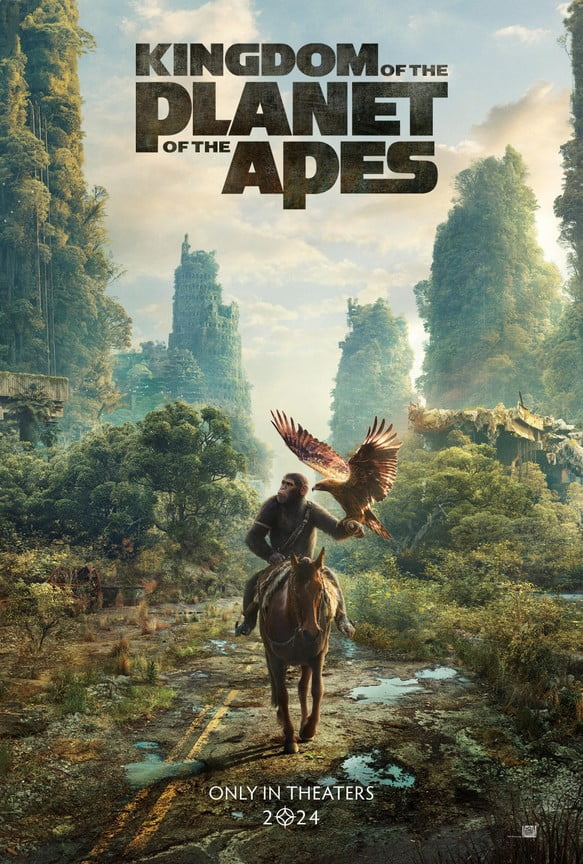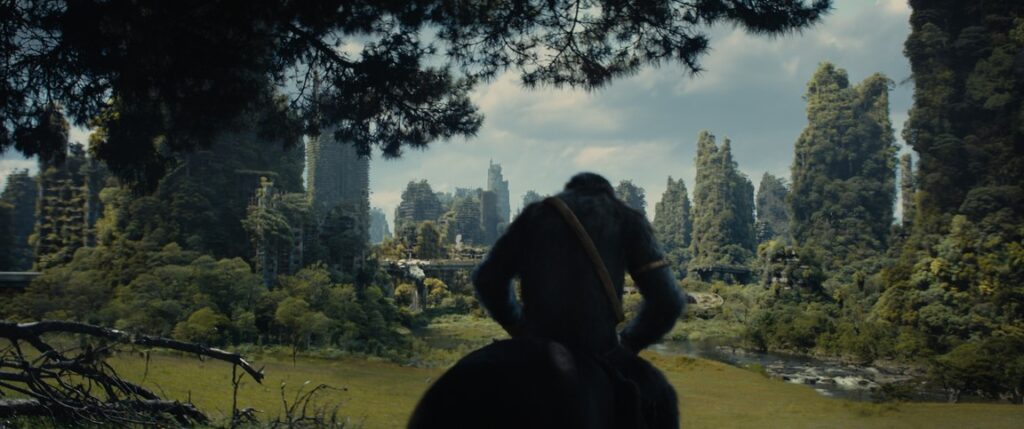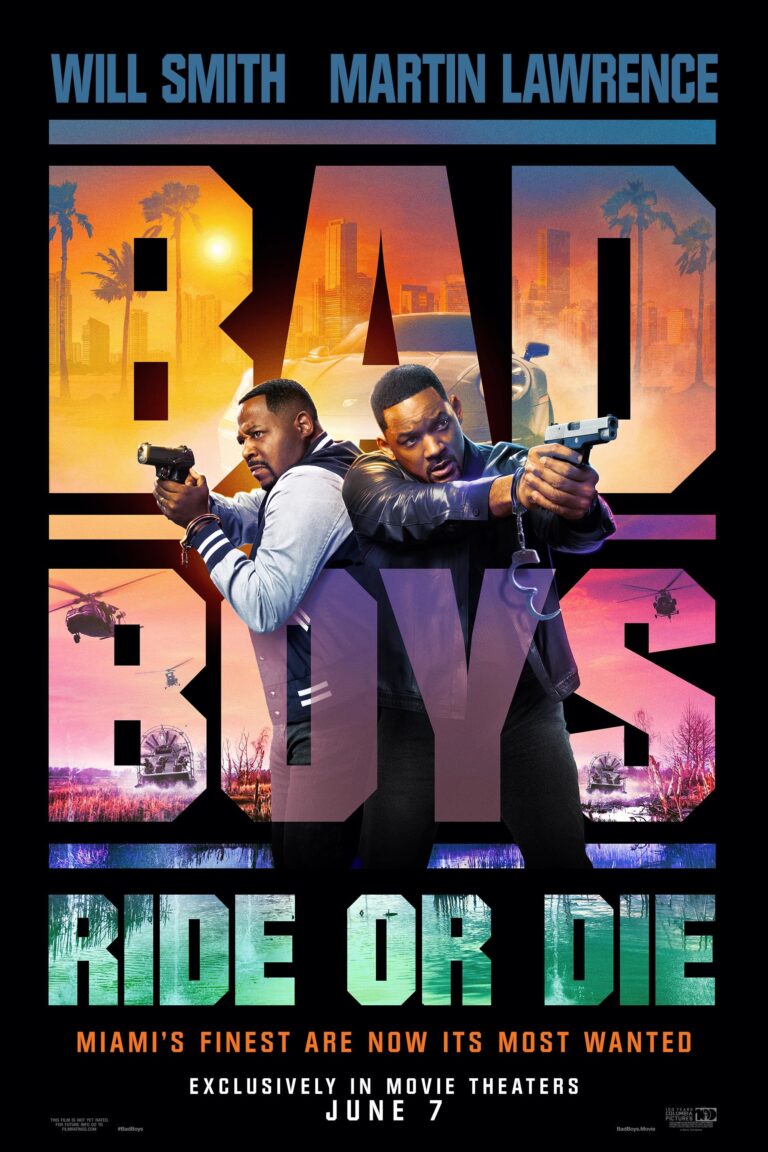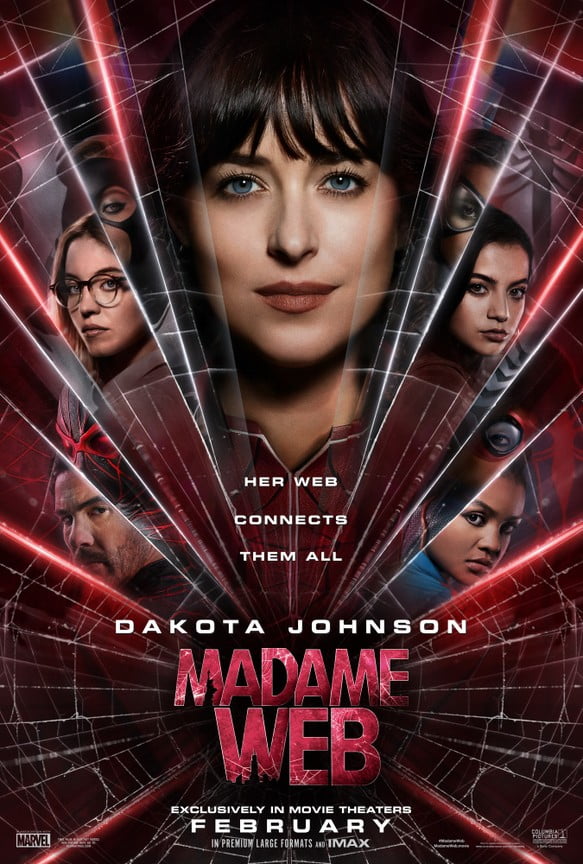
Kingdom of the Planet of the Apes Review: A New Era That is Visually Stunning Yet Subdued
If you’re a big fan of the Planet of the Apes series, Kingdom of the Planet of the Apes might be high on your must-watch list. This fourth installment, directed by Wes Ball, is set many generations (300 years to be exact) after Caesar’s reign, where apes have become the dominant species. While there’s plenty to admire, it lacks the same powerful action and emotional resonance that made Caesar’s legacy so unforgettable in the previous Apes films.
Storyline and Plot
In Kingdom of the Planet of the Apes, one young ape undertakes a harrowing journey that tests his limits. Noa, a young chimpanzee, accidentally leads a group of apes who are hunting down a mysterious girl named Nova to his village. These apes, who claim to follow Caesar’s teachings, destroy his home and capture his clan. Desperate to save them, Noa embarks on a dangerous quest to rescue his clan. It’s a classic hero’s journey, but more introspective.
Along the way, he meets Raka, an old, wise orangutan who basically becomes his Yoda. Guiding him and teaching him that maybe apes and humans aren’t as different as they seem. He also crosses paths with Nova, who joins him on his mission, though her intentions remain unclear.
The first half of the film sets up Noa’s internal struggle beautifully—there’s a real sense of weight to his decisions. But then the movie starts to drag in the middle. Though the story sets up some emotional stakes, the film never fully delivers the thrilling climax you’d expect from the Apes movies.

World-Building and Visual Effects
If nothing else, Kingdom of the Planet of the Apes is a feast for the eyes. The CGI in this film is top-tier. Every detail, from the apes’ facial expressions to the crumbling remnants of human cities, is rendered with such detail. You can’t help but get sucked into this dystopian world. It’s not just a backdrop—it feels alive, and every scene draws you deeper into it.
That said, while the world-building is phenomenal, the action doesn’t quite keep pace with it. If you’re coming in expecting huge, cinematic fight scenes like the ones we saw in War for the Planet of the Apes. Then you might walk away feeling like something’s missing.

Characters and Character Development
At the heart of the movie is Noa, a young ape thrust into a journey of self-discovery. His bond with the orangutan, who helps guide him through this turbulent time, feels natural and heartfelt. The orangutan’s wisdom shifts Noa’s perspective, and you get the sense that his growth hints at him becoming the next Caesar-like leader.
Another crucial element of the story is Nova, the human woman who the apes are tracking down. While she plays a key role in helping Noa, her character feels underdeveloped. Her backstory is a bit vague, and the dynamic between her and Noa never quite reaches the emotional depth that it could. The tension between the apes and humans is ever-present, but it doesn’t hit as hard as it did in previous films.
Proximus Caesar, the new tyrannical ape leader, builds tension throughout the movie, taking on the mantle of villain in this Planet of the Apes film. On paper, he seems like the perfect antagonist. A leader rising to power in a new era where apes rule, claiming to be the new great Caesar. However, while his character is meant to be threatening, his presence on-screen falls a bit flat. He doesn’t exude the kind of menace you’d expect from a villain of his stature. His strength and power are implied, but never fully demonstrated. As a result, it’s difficult for the audience to truly fear him or feel the weight of his role as a tyrannical leader. Without that sense of danger, Proximus Caesar never quite becomes the intimidating force the film needs him to be.

Themes and Social Commentary
Like the best Planet of the Apes movies, this one continues exploring themes of leadership, survival, and the ongoing power struggle between species. The presence of a new tyrannical ape leader contrasts sharply with Caesar’s more compassionate approach and beliefs regarding apes and humans. This shift in beliefs over time highlights a kind of generational game of broken telephone. Where the original truth gradually fades away, giving rise to a new version of the truth.
The film also subtly touches on the coexistence between apes and humans. While apes are the dominant species for now. The humans’ presence remains a constant reminder of the fragile balance between power and survival. That being said, these themes are present but not as deeply explored as in previous Apes movies.
Conclusion and Recommendation
All in all, Kingdom of the Planet of the Apes is a solid addition to the franchise, but it doesn’t quite reach the heights of its predecessors. The world-building is immersive, and Noa’s personal journey keeps things engaging. But if you’re looking for the explosive, heart-pounding action that defined Caesar’s trilogy, you might find yourself a bit underwhelmed. It’s a beautifully crafted film, for sure, but one that’s more about character development than epic battles.
If you’re a fan, you’ll definitely want to check it out. But just keep in mind—it’s a slower burn, with more focus on building up to what’s likely to come in future installments.
You Might Also Like





